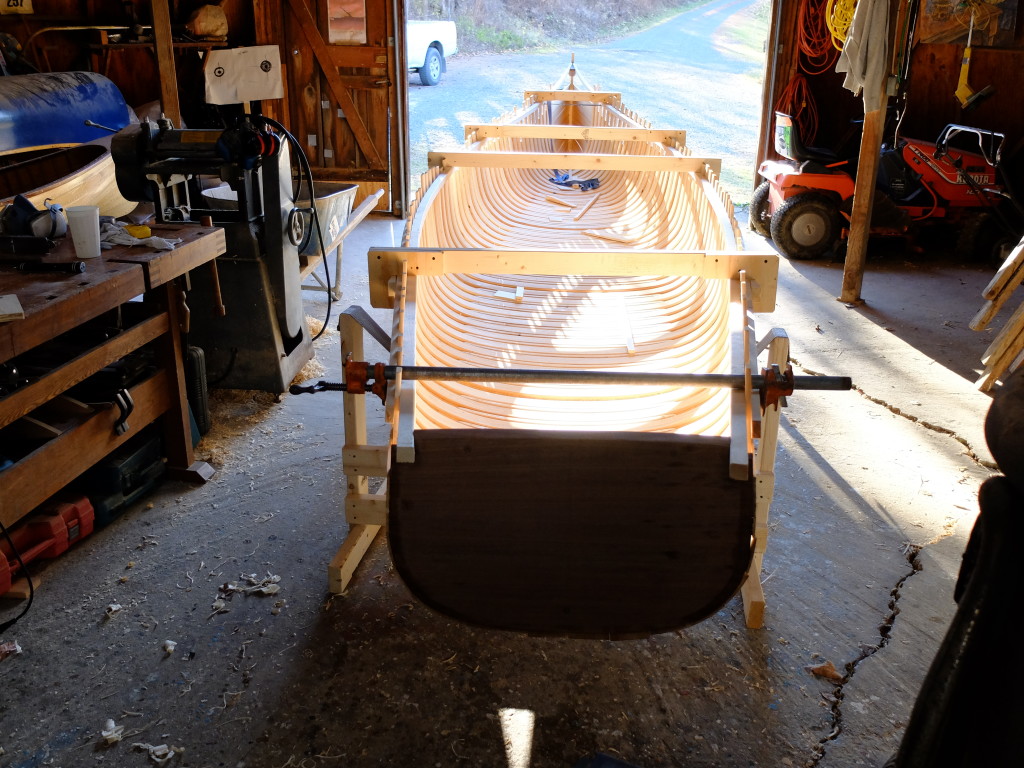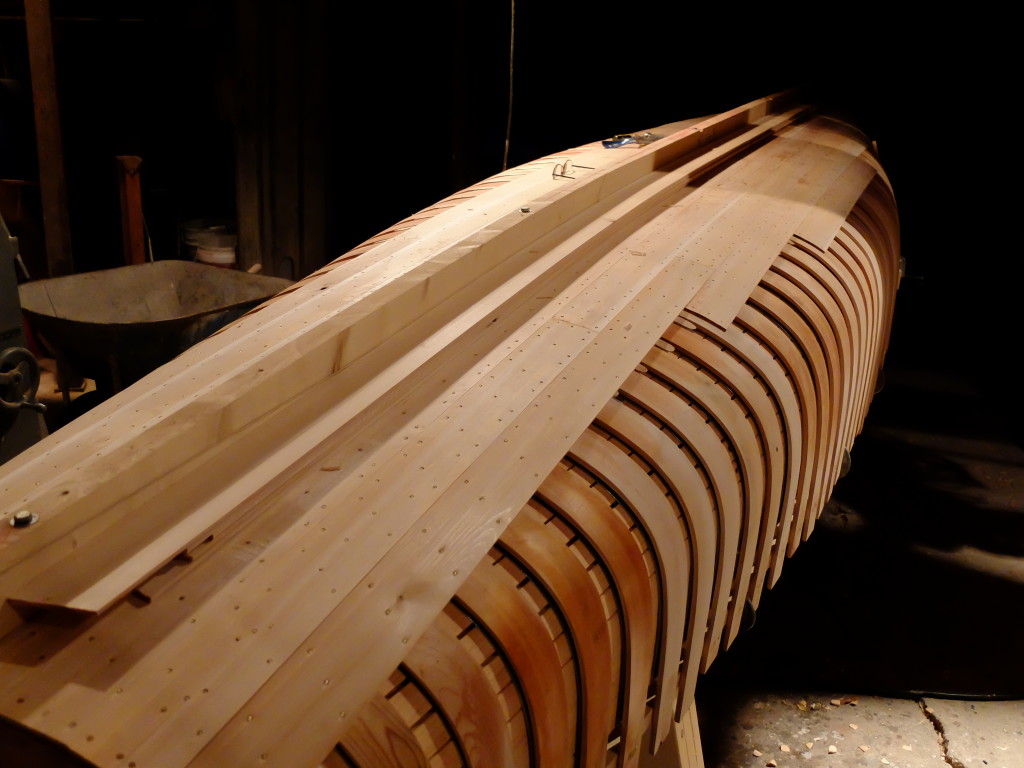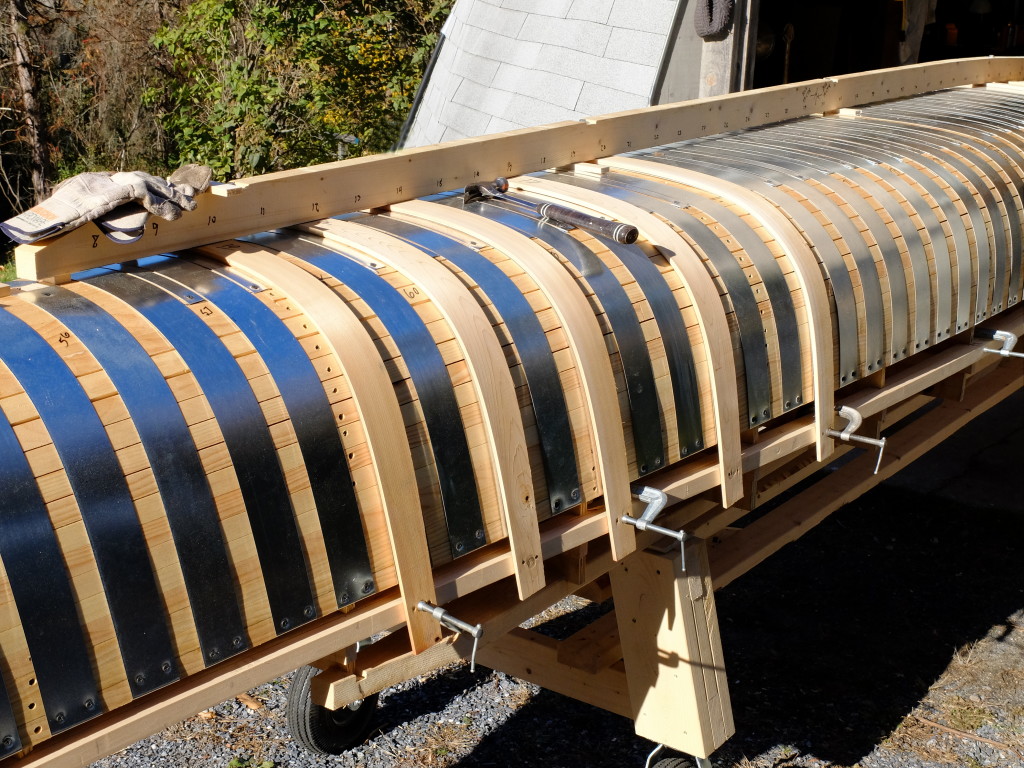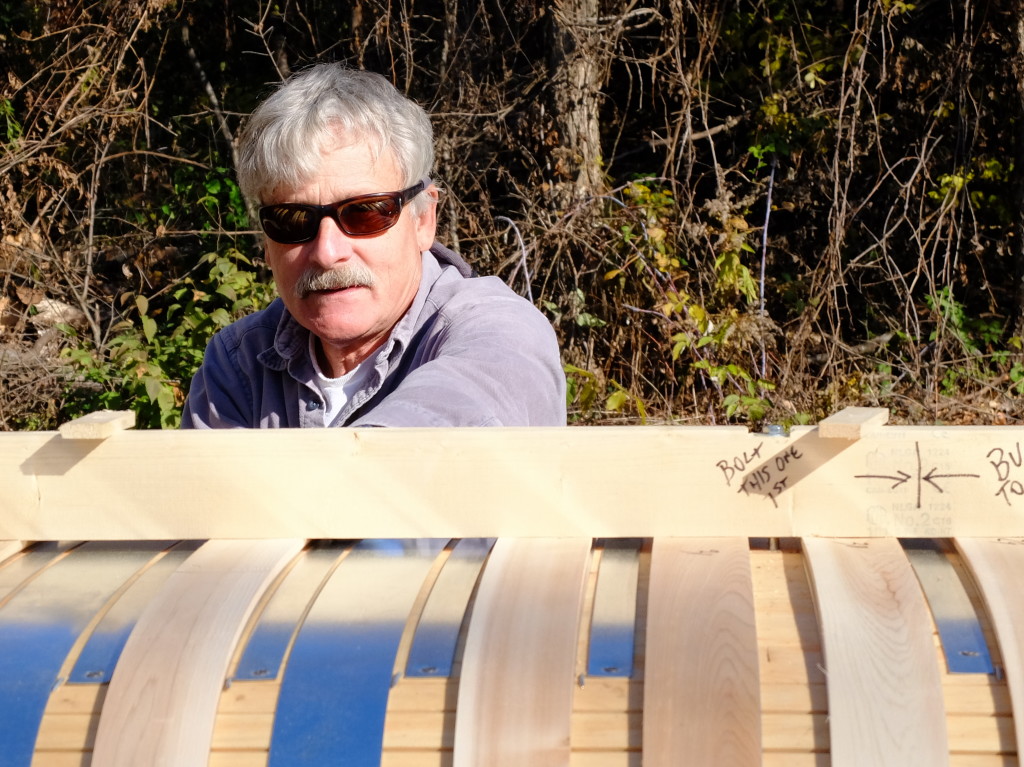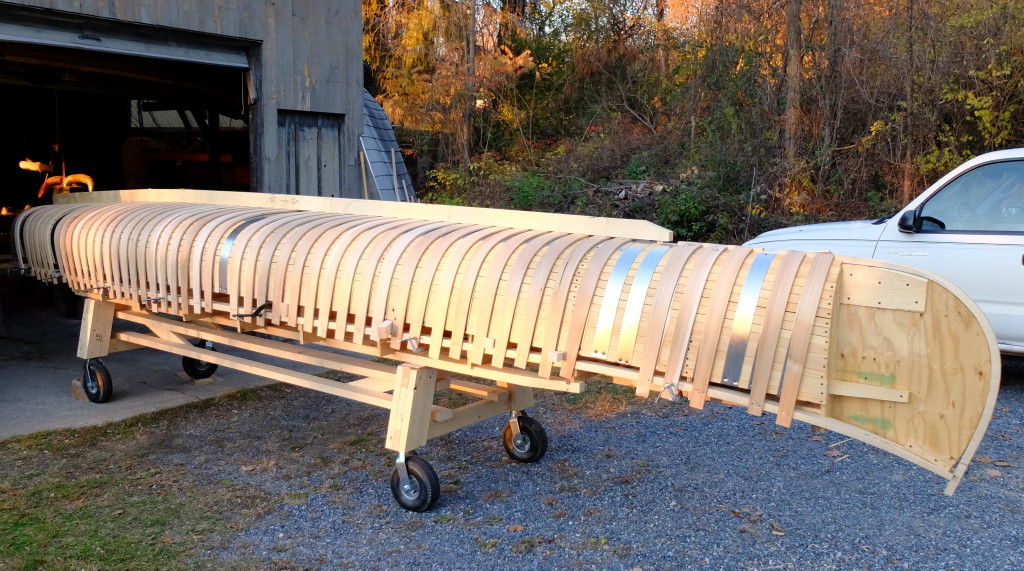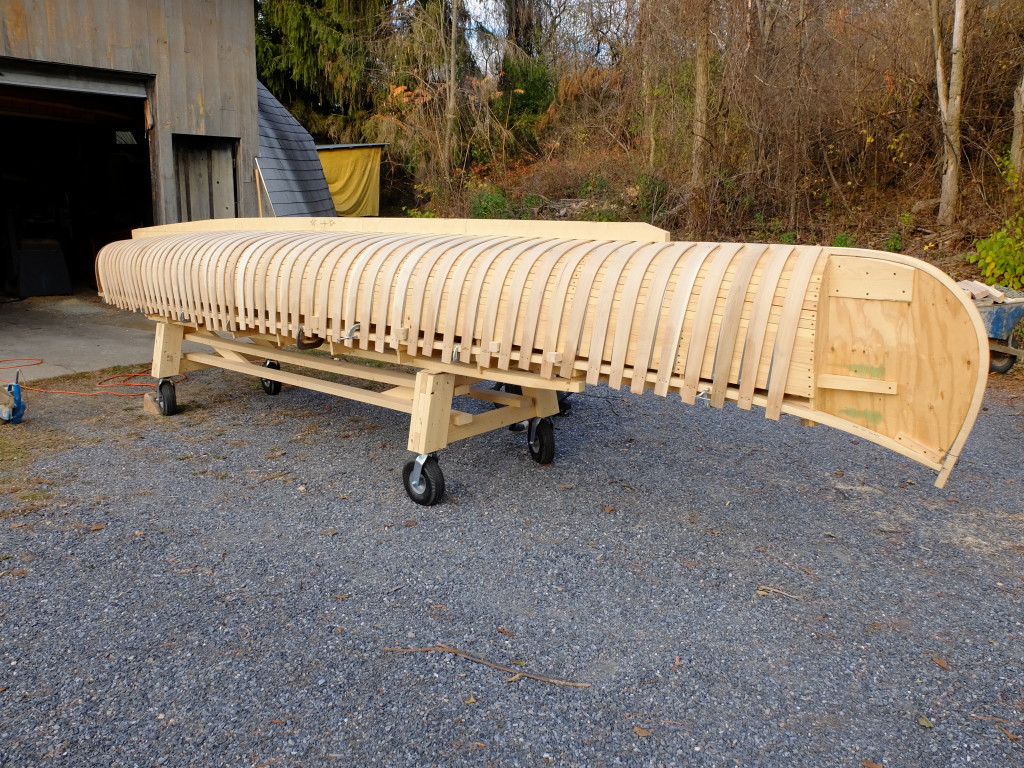My planking measured 3/16″ x 2 7/8″, the vast majority of it clear, close grained, quartersawn. Very good cedar. Tacks were 13/16″ from DB Gurney. Anywhere the planking was bent much, either strong twist or cupped around the bilge, I soaked it in rags I kept in the boiling kettle. A couple minutes softens everything up so it will bend without fracturing. I also soaked any place it looked like a tack might split a plank – like at the transom ends. The ends of the half ribs are held down with bent nails from inside the form that get pushed out of the way as planking proceeds. 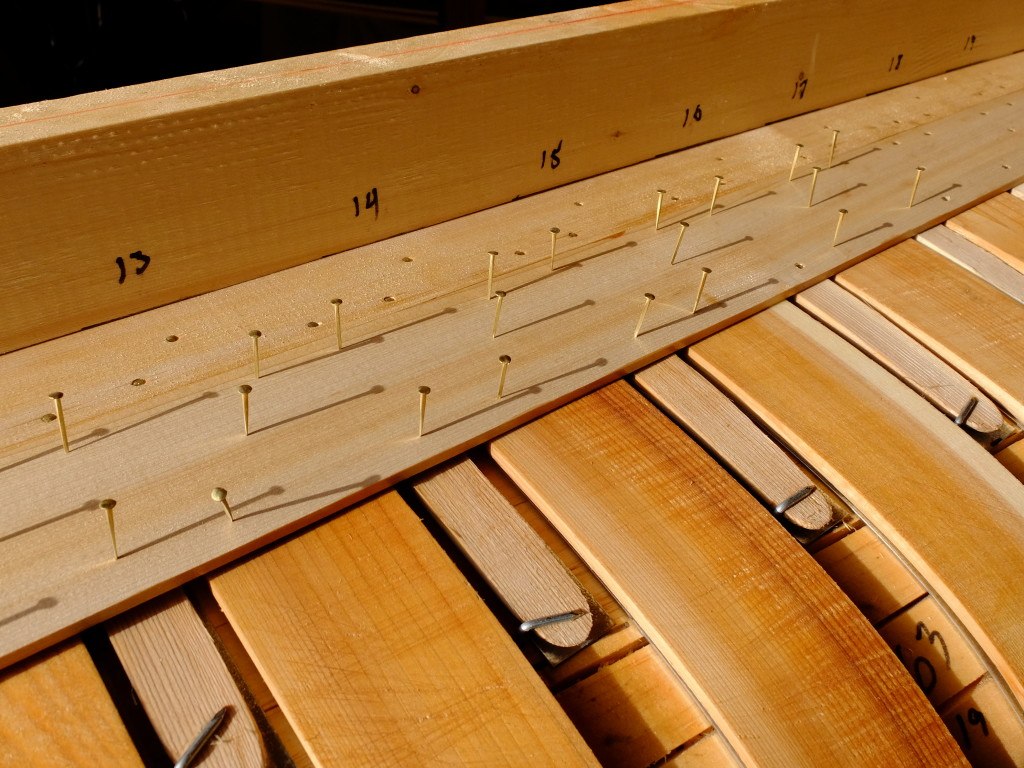 Half done with the bottom
Half done with the bottom
The gored area
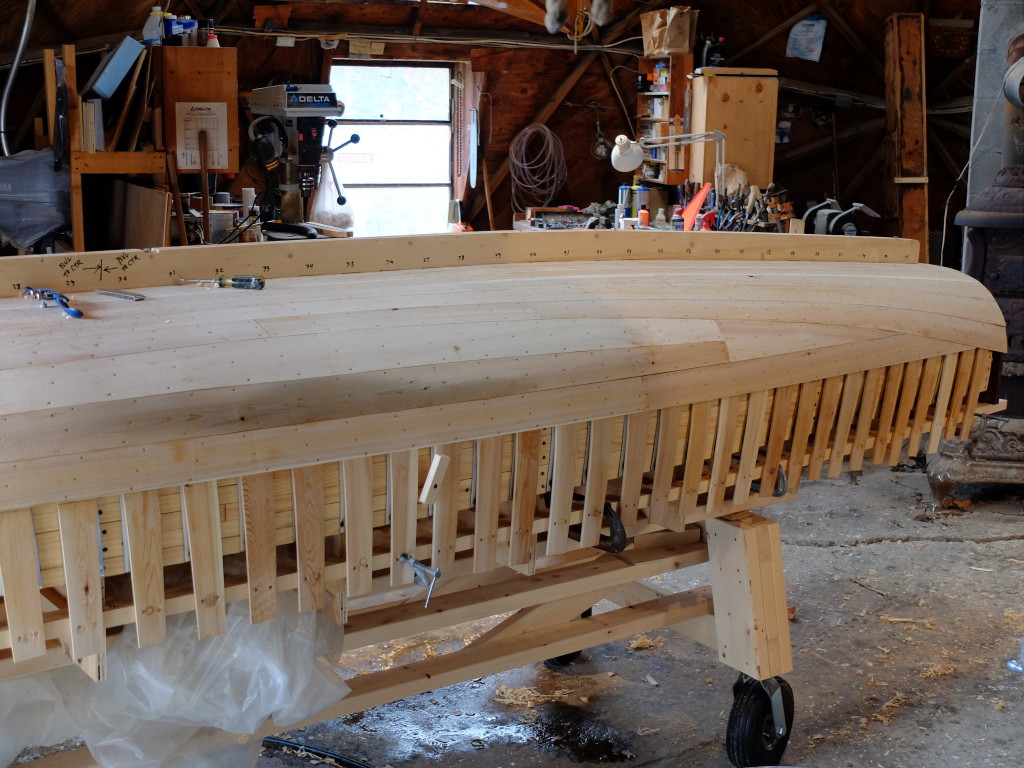 I took the planking within 2 planks of the gunwale and took the boat off the form. The residual tension in the ribs/gunwales fractured one of the gunwales when everything expanded – I removed the broken gunwale –
I took the planking within 2 planks of the gunwale and took the boat off the form. The residual tension in the ribs/gunwales fractured one of the gunwales when everything expanded – I removed the broken gunwale –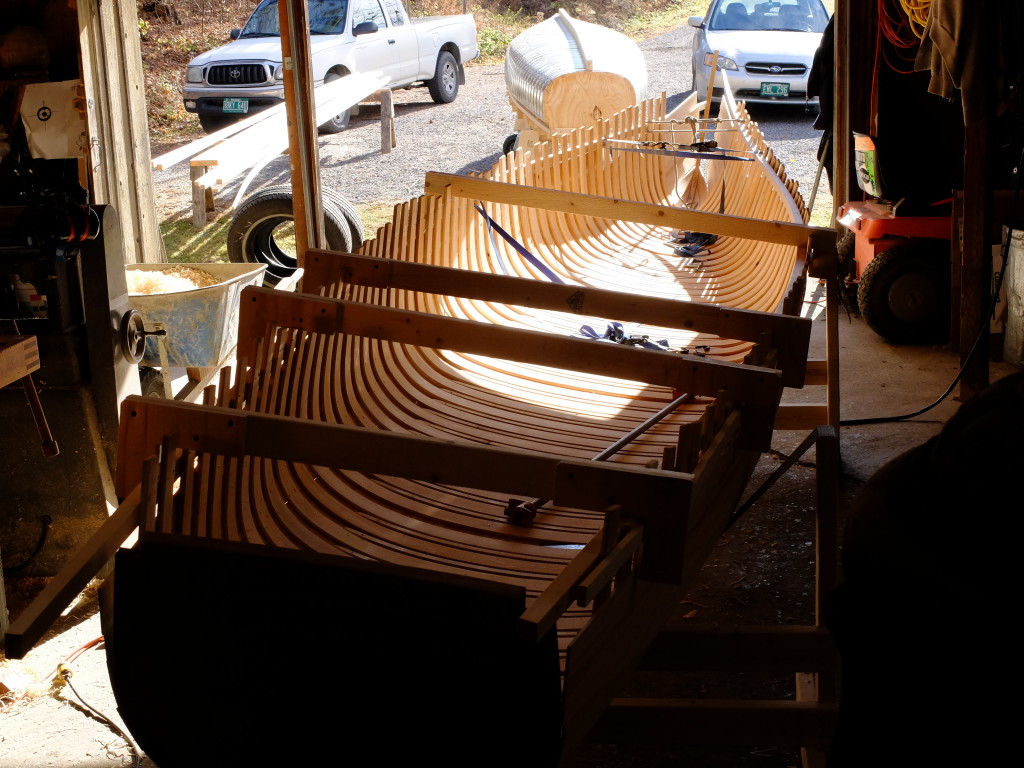 and put a new one in. It took most of a day. Below – pulling the hull with the new gunwale into shape –
and put a new one in. It took most of a day. Below – pulling the hull with the new gunwale into shape –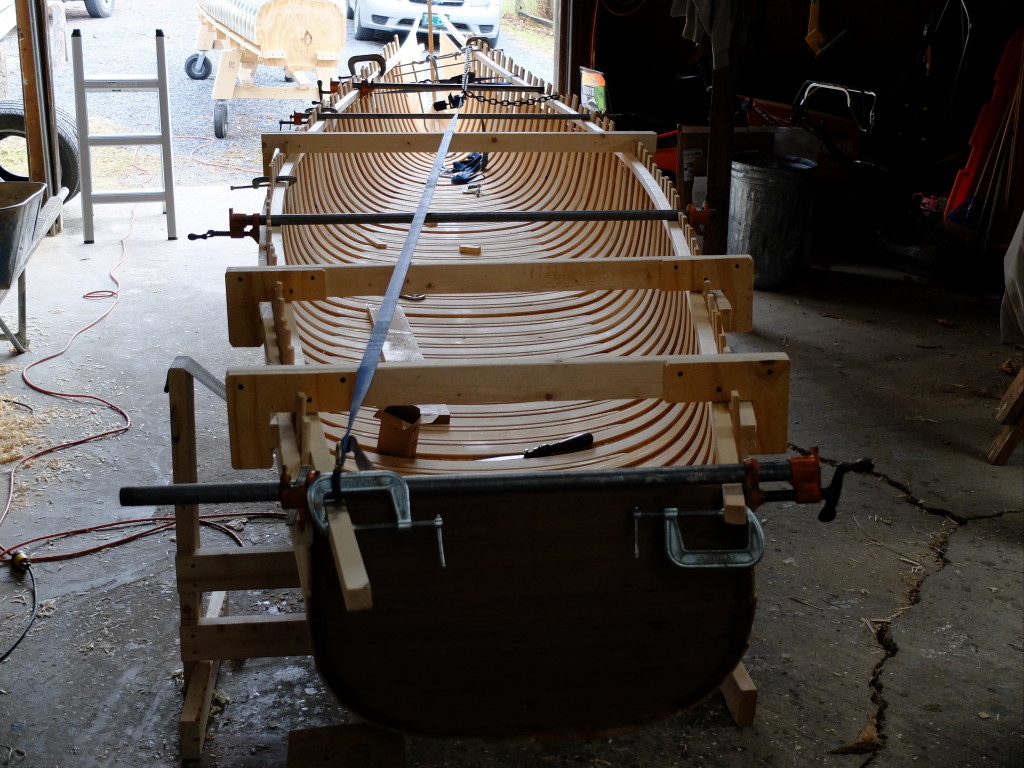 And all tied together at the stem and transom.
And all tied together at the stem and transom.